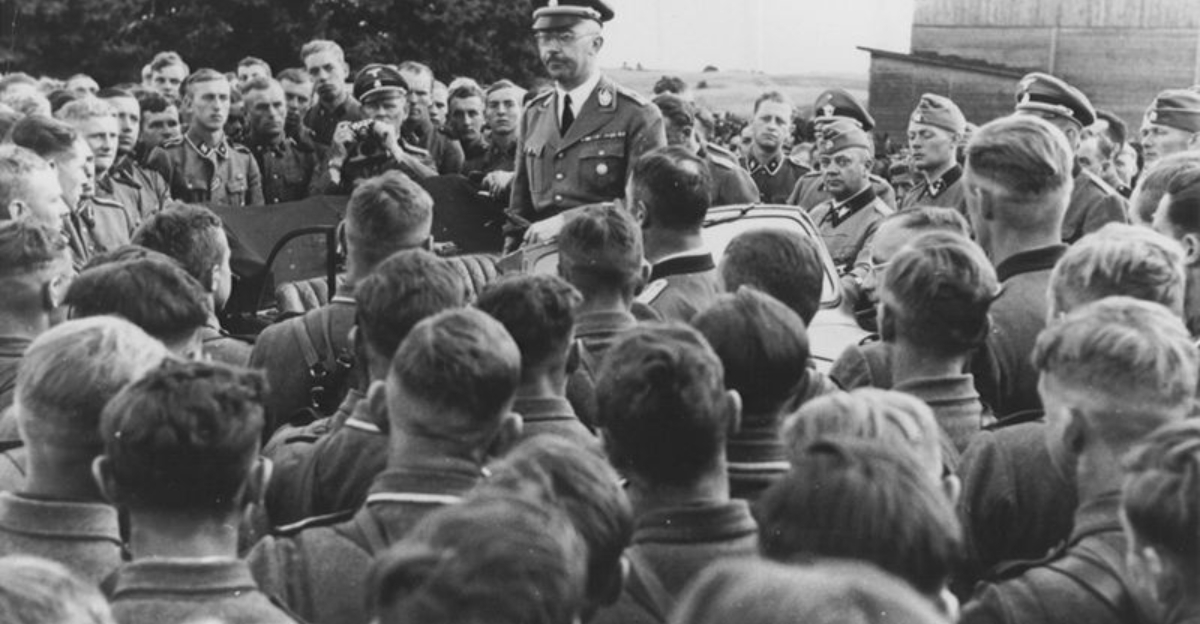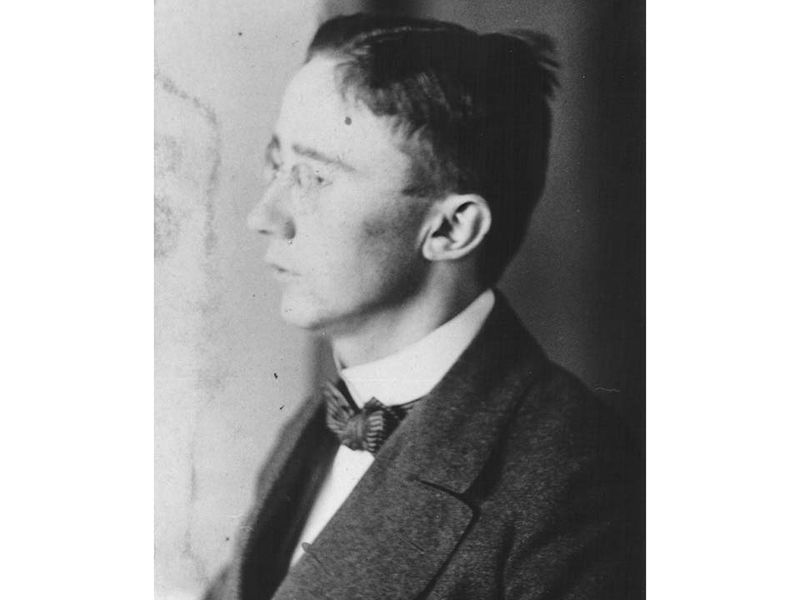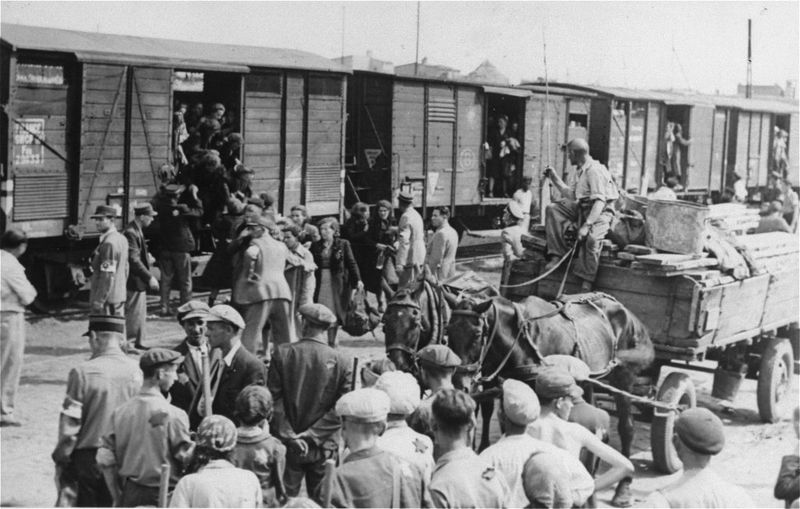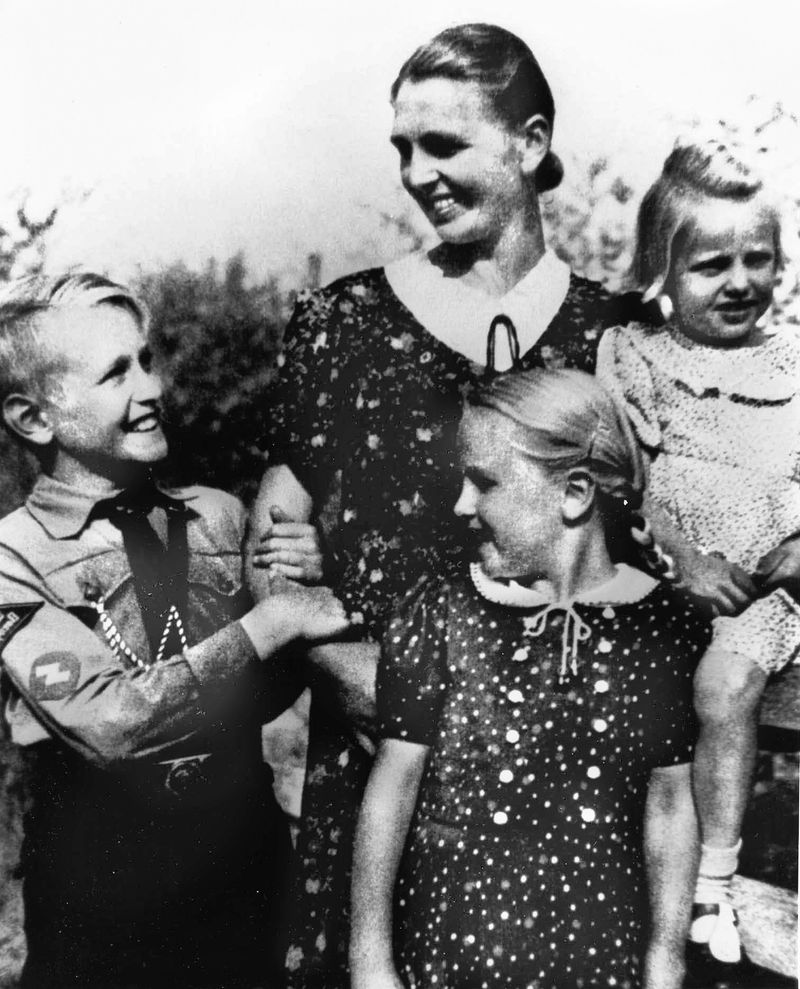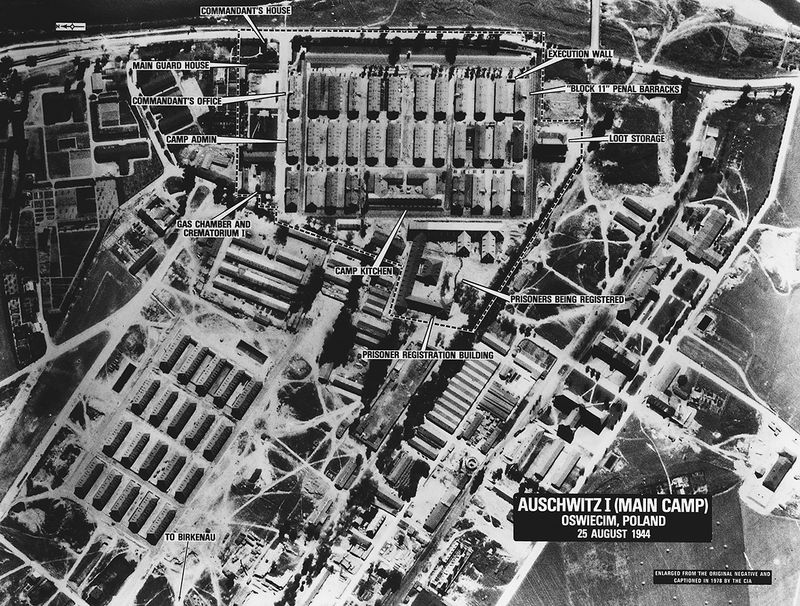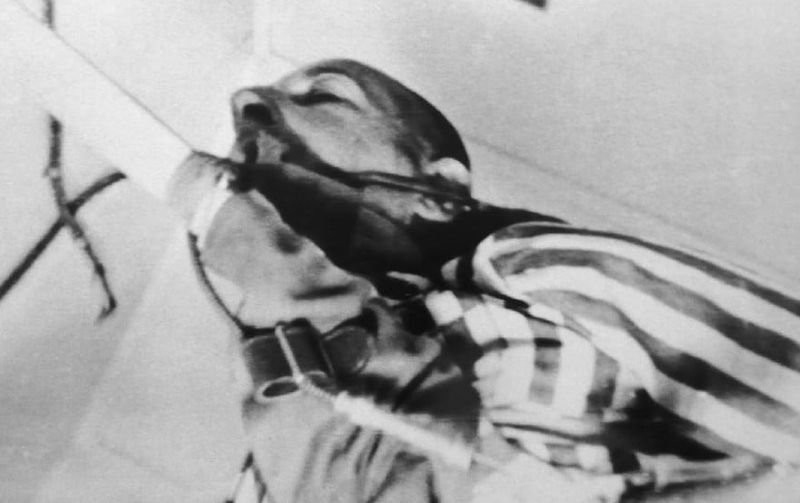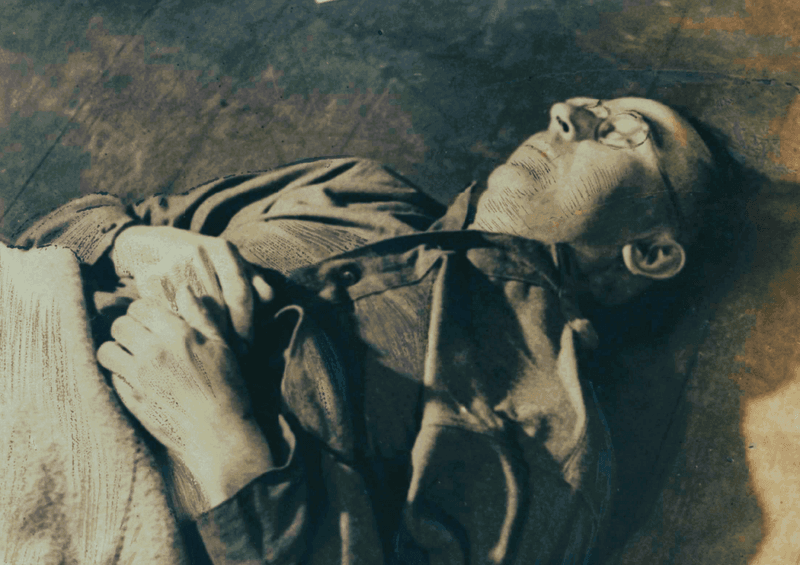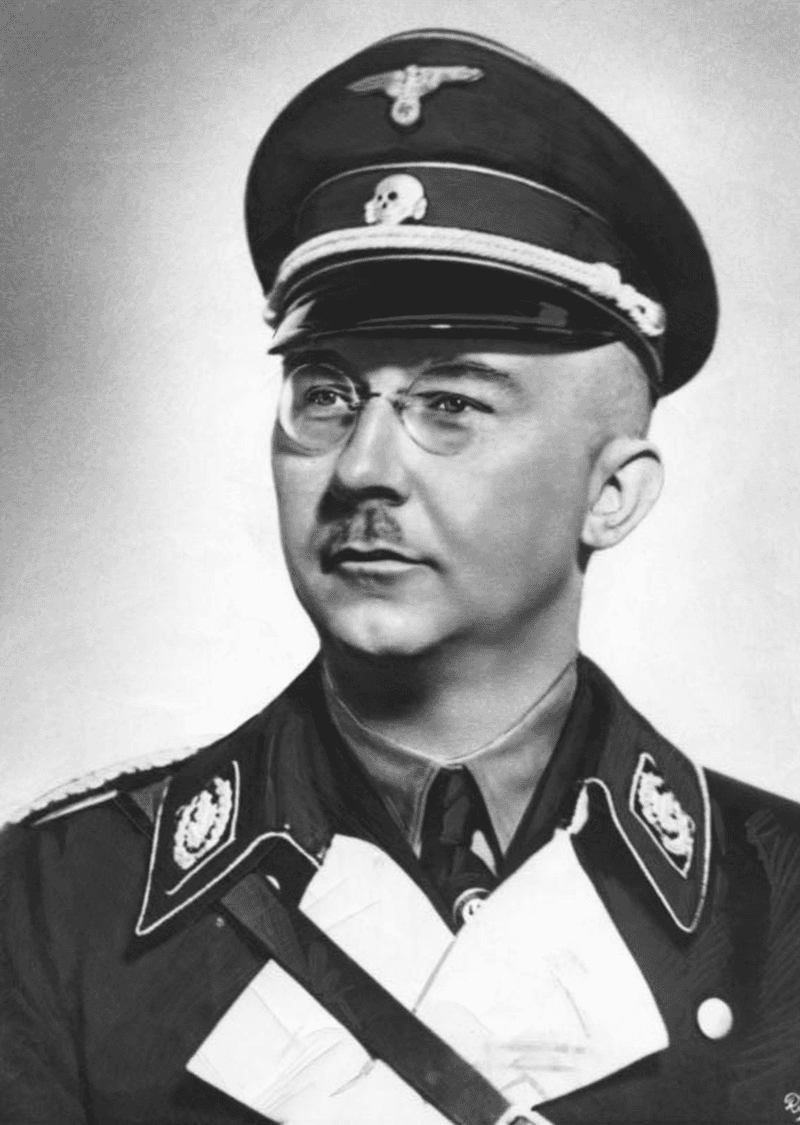Heinrich Himmler stands as one of history’s most notorious figures, responsible for implementing the Holocaust during World War II. As the leader of the SS and chief architect of Nazi Germany’s genocide program, he directly oversaw the murder of millions of Jews and other victims deemed undesirable by the Nazi regime. Understanding Himmler’s role helps us comprehend how ordinary humans can become capable of extraordinary evil when driven by hateful ideologies.
1. Early Life & Radicalization
Heinrich Himmler’s journey toward becoming a mass murderer began in middle-class comfort. Growing up in Munich, young Heinrich developed a fascination with German mythology and military history that would later fuel his extremist worldview.
His rejection of his Catholic upbringing coincided with Germany’s humiliating defeat in World War I, creating the perfect storm for radicalization. The economic chaos and political instability of the Weimar Republic pushed him toward extremist groups.
By joining Hitler’s fledgling Nazi movement in 1923, Himmler found purpose in a cause that promised to restore German greatness while blaming Jews for the nation’s problems. This early indoctrination set the foundation for his later atrocities.
2. Rise to Power: The SS & Nazi Terror
Appointed to lead the SS in 1929, Himmler transformed what was once a small protection squad into Nazi Germany’s most feared organization. His methodical approach to building power involved recruiting men who matched his vision of Aryan physical ideals – ironic given his own unremarkable appearance.
Under his leadership, the first concentration camp at Dachau became the testing ground for systems of terror that would later be implemented across occupied Europe. Himmler’s genius for bureaucracy allowed him to create an empire of fear where ordinary citizens became willing executioners.
By war’s end, his black-uniformed SS controlled every aspect of state security, from border patrol to death camps, all answering to him alone.
3. Mastermind of The Final Solution
From behind his desk, Himmler orchestrated genocide with the cool efficiency of a corporate executive. The Wannsee Conference marked the moment when Nazi leaders formalized plans to murder every Jew in Europe – with Himmler’s representatives taking detailed notes on implementation.
What makes Himmler particularly chilling was his ability to frame mass murder as an administrative challenge. He solved logistical problems like transportation schedules, disposal of bodies, and collection of valuables with frightening competence.
While visiting the killing fields in 1941, he famously told SS men that despite the difficulty of their task, they must remain “decent” – showing how thoroughly he had twisted normal human morality to serve his genocidal aims.
4. Obsession with Racial Purity & Lebensborn Program
Himmler’s twisted vision extended beyond destruction into a bizarre breeding program. The Lebensborn facilities functioned as nurseries where racially “pure” women could give birth to children fathered by SS officers – creating the next generation of the master race.
Children with blond hair and blue eyes were literally stolen from occupied countries like Poland and Norway. Kidnapped from their families, these youngsters underwent forced Germanization, their original identities erased as they were placed with Nazi families.
Himmler’s racial theories bordered on the absurd. He measured skulls, studied eye color, and created elaborate racial hierarchies that had no scientific basis but justified the regime’s worst crimes against humanity.
5. The Concentration & Extermination Camp System
Himmler created a network of hell on earth that spanned the continent. What began as detention centers for political opponents evolved into factories of death where efficiency of killing became the primary concern.
Auschwitz-Birkenau represented the culmination of Himmler’s industrialized murder system. After touring the camp and witnessing mass killings, he demanded faster methods, leading to the implementation of Zyklon B gas chambers that could kill thousands daily.
Most disturbing was how the camp system merged business with genocide. Slave labor extracted maximum work from prisoners before death, gold teeth were harvested from corpses, and human hair was collected for industrial use – creating a grotesque economy of murder directed by Himmler’s offices.
6. Medical Experiments & Human Atrocities
Himmler’s twisted scientific curiosity unleashed some of history’s most horrific medical crimes. He personally approved experiments that treated humans as laboratory animals, all conducted under the guise of advancing German medicine and military needs.
Victims were frozen alive to test survival equipment for German pilots. Others were deliberately infected with diseases or subjected to unnecessary surgeries without anesthesia. Women endured forced sterilization experiments as Himmler sought efficient ways to prevent “undesirable” populations from reproducing.
Perhaps most disturbing was his collection of Jewish skeletons for anthropological study – victims were selected, measured while alive, then killed specifically so their bodies could become museum specimens in his planned institute of racial science.
7. Failed Negotiations & Betrayal of Hitler
As Allied forces closed in during early 1945, Himmler’s survival instinct kicked in. Through Swedish diplomat Count Bernadotte, he secretly offered to surrender German forces in the west while continuing to fight the Soviets – a desperate attempt to split the Allied coalition.
His calculation proved catastrophic. News of these negotiations reached Hitler in his Berlin bunker, triggering a furious reaction from the Führer who had once called Himmler “der treue Heinrich” (the loyal Heinrich).
Stripped of all positions and declared a traitor to the Reich, Himmler fled Berlin with fake identity papers. The man who had commanded life and death for millions now found himself alone, hunted, and abandoned by the movement he had served with fanatical devotion.
8. Suicide & Death
The final chapter of Himmler’s life came with unexpected swiftness. British soldiers at a checkpoint noticed an ordinary-looking man with an eye patch whose papers identified him as “Heinrich Hitzinger” – but his nervous behavior raised suspicions.
During interrogation, the disguise quickly fell apart. When ordered to open his mouth for examination, Himmler bit down on a cyanide capsule hidden in a tooth cavity – the same method of suicide he had provided to captured SS officers to prevent interrogation.
British authorities buried his body in an unmarked grave on Lüneburg Heath. Even the location was kept secret to prevent the grave from becoming a pilgrimage site for future Nazi sympathizers – denying Himmler even the dignity of a marked final resting place.
9. Legacy of Evil
Himmler’s shadow stretches far beyond his death. His organizational methods transformed genocide from chaotic violence into systematic extermination, creating a template for modern mass atrocities that continues to haunt humanity.
Unlike other Nazi leaders who claimed they were “just following orders,” Himmler’s personal papers reveal he was a true believer. His speeches to SS officers, particularly the infamous Posen speeches, show he understood exactly what he was doing and believed it necessary for Germany’s future.
Modern extremist groups still draw inspiration from his methods and ideology. Holocaust denial movements must constantly be countered with the overwhelming evidence of his crimes – making education about Himmler’s role crucial to preventing future genocides.
10. Psychological Profile: A Weak Man Turned Monster
The contradiction between Himmler’s physical appearance and his monstrous power fascinated everyone who met him. Former schoolmates described a shy, awkward boy who transformed into history’s most methodical mass murderer.
His health obsessions bordered on comedic – he carried herbal remedies everywhere, refused to shake hands fearing germs, and believed in bizarre dietary theories. Yet this same man could watch executions without flinching, even as he complained about getting blood splatter on his clothing.
Historians continue debating what drove him: Was it a desperate need to prove his worth? A true belief in Nazi pseudoscience? Or simply the intoxication of unlimited power? The enigma of how this unremarkable man became history’s architect of industrialized murder remains disturbing precisely because it suggests anyone might be capable of similar transformation.
